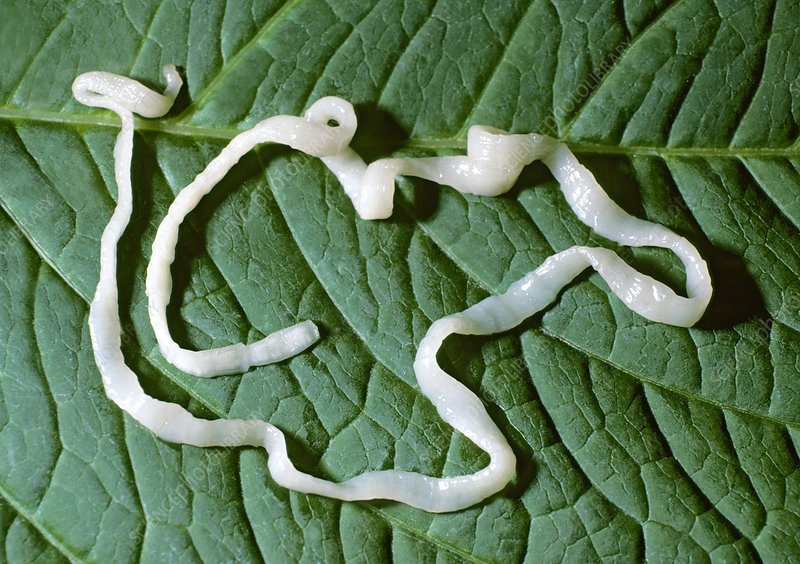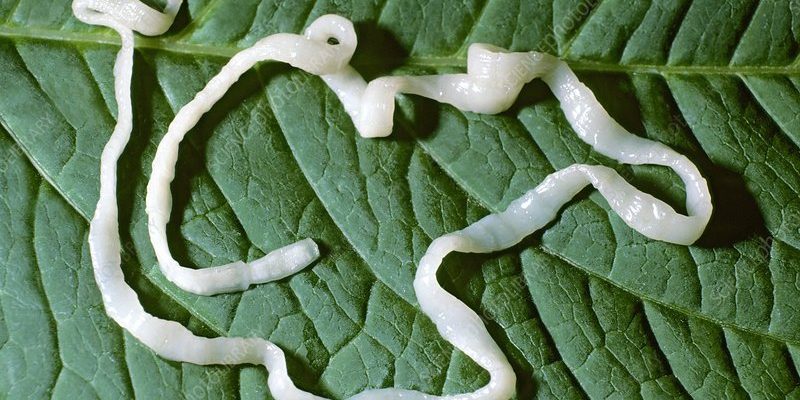
Using tapeworms in environmental monitoring might seem odd at first, almost like using a spoon to dig a hole. But here’s the thing: these creatures have an incredible ability to reflect the conditions of their environment. They are sensitive to changes in their host, which often translates into larger ecological shifts. So, let’s dive into how these fascinating organisms can be harnessed for something as important as monitoring environmental health.
What Are Tapeworms and How Do They Work?
Tapeworms are flat, segmented worms that live in the intestines of various animals, including humans. They have an interesting way of life: they absorb nutrients directly through their skin, which means they don’t have a digestive system like we do. This unique biology makes tapeworms particularly sensitive to changes in their environment, which is why they can be excellent bioindicators.
You might be wondering how these creatures can tell us about environmental health. Well, tapeworms accumulate various substances, like heavy metals or other pollutants, from the food they consume. This means that by examining the tapeworms found in a specific area, scientists can gain insights into the presence of harmful substances in the ecosystem. Think of it like reading a book where the tapeworm is the narrator, telling us about the hidden dangers lurking in the environment.
Life Cycle of Tapeworms
To understand their role in environmental monitoring, it helps to know how tapeworms reproduce and grow. They have complex life cycles that often involve multiple hosts. A typical tapeworm starts as an egg, which can be ingested by an intermediate host such as fish or rodents. Inside the host, the egg develops into a larval form, eventually growing into an adult tapeworm that can then infect a final host, often a larger animal.
This cycle is crucial for bioindication because tapeworms reflect the health of not only their immediate hosts but also the broader environmental conditions affecting those hosts. For instance, if a tapeworm population in a river is thriving, it might suggest a healthy food chain and ecosystem. Conversely, if these populations are declining, it could indicate environmental stressors like pollution or habitat disruption.
Why Use Tapeworms for Environmental Monitoring?
Using tapeworms for environmental monitoring has several advantages. Firstly, they are widespread and found in many habitats, from marine systems to freshwater environments. This ubiquity means that researchers can gather data across various ecosystems without needing specialized equipment or techniques.
Secondly, tapeworms can provide long-term data. Since they tend to live for extended periods in their hosts, scientists can assess changes over time, offering a historical perspective on environmental health. This can be particularly useful for understanding the impacts of climate change or human activity on ecosystems.
Finally, compared to other monitoring methods, studying tapeworms can be less costly and less labor-intensive. Researchers don’t require advanced technology; instead, they can collect samples relatively easily. It’s like having a reliable old toolbox that gets the job done without breaking the bank.
Limitations of Using Tapeworms
Of course, no method is perfect. While tapeworms have their advantages, there are limitations to consider. For instance, they can be affected by many factors, including host health and local environmental conditions. This means that tapeworm data must be interpreted carefully, alongside other indicators, to get a clear picture of environmental health.
Additionally, not all tapeworm species are equally useful for monitoring purposes. Some may thrive in polluted environments, while others are more sensitive to changes, making it important for researchers to choose the right species for their studies. Think of it like picking the right tool for a job. The more suited the tool, the better the outcome.
How Tapeworms Help in Different Ecosystems
Tapeworms can serve varying roles depending on where they’re found. In aquatic ecosystems, for example, they help scientists understand the impacts of pollutants like heavy metals. When researchers find high levels of certain metals in tapeworms, they know there’s a potential issue in the water quality. This is crucial for the health of not just the fish but the entire ecosystem.
Similarly, in terrestrial environments, tapeworms can indicate the health of hosts like rodents. If rodent populations are declining, it may signal changes in their food sources or habitat quality, which researchers can track by studying the tapeworms that infect these rodents. This interconnectedness reminds us that ecosystems thrive on balance; when one part is affected, the ripples can be felt throughout.
Case Studies of Tapeworms in Bioindication
There are real-world examples of tapeworms used for environmental monitoring. In studies conducted in the Amazon River, researchers analyzed tapeworms found in fish species. They discovered that certain pollutants were present in the tapeworms, leading to further investigation into the water quality of the river. This kind of information is vital for conservation efforts and maintaining biodiversity in such a rich ecosystem.
In another study, scientists examined tapeworms in birds to assess the health of wetland habitats. The findings linked tapeworm health to the quality of the wetlands, helping to inform restoration projects that support both wildlife and their environments. Each case provides valuable insights, showcasing the potential of these small creatures to make a big impact on environmental science.
Practical Applications of Tapeworm Research
The research on tapeworms doesn’t just sit in academic circles—it has real-world applications too. For example, governments and environmental agencies can use tapeworm data to set targets for reducing pollution in water bodies. By monitoring tapeworm populations, they can determine if conservation efforts are working or if more stringent measures are needed.
Moreover, this research can help in educating communities about the health of their local ecosystems. By understanding how tapeworms reflect environmental conditions, both scientists and the public can work together to protect the environment. It fosters a sense of stewardship and awareness of the delicate balance that sustains our planet.
Future Directions in Tapeworm Monitoring
As we look ahead, the potential for tapeworms in environmental monitoring is exciting. Advances in technology, like genomic sequencing, can help identify tapeworm species and their health levels more accurately. This means researchers could gather even more precise data about environmental conditions.
Additionally, combining tapeworm research with other bioindicators could provide a more comprehensive view of ecosystem health. Imagine a toolkit where tapeworms work alongside other species to create a rich tapestry of information about the environment. The more we learn, the better equipped we become to tackle environmental challenges.
In a world increasingly faced with ecological challenges, tapeworms offer a unique lens through which we can catch glimpses of environmental health. They are more than just parasitic organisms—they are valuable tools in monitoring ecosystems and providing insights into the impacts of pollution and climate change. By understanding their role and harnessing their capabilities, researchers can work toward a healthier planet. So, the next time you think of tapeworms, consider their unexpected potential as eco-detectives, helping us safeguard the environment we all share.

